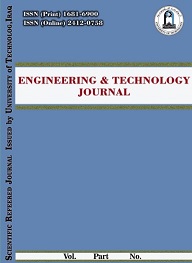Abstract
Abstract-The present study has been conducted to investigate the removal of vanadium from Iraqi crude oil by prepared zeolite nanoparticles. Ball milling was used as a top down approach to synthesize zeolite nanoparticles. Different variables such as adsorbent loading, Vanadium loading, and operating time were investigated for their influence on Vanadium removal. Experimental results of adsorption test show that both Langmuir and Freundlich isotherms predict well with the experimental data. Kinetic analysis of the studied system gives the following linear equations, For Langmuir isotherm: with R2 = 0.9738, For Freundlich isotherm: – 0.4412 with R2 = 0.9711
XRD and EDX analyses reveal the noticeable uptake of zeolite for V. In crude oil, experimental results indicated that for zeolite loading at 1 g/100 ml oil and within approximately 6 h, the removal efficiencies of V were 65, 40, and 30% at vanadium loadings of 70, 80, and 90 ppm respectively. Long-time tests revealed the high capability of zeolite A for vanadium removal.
XRD and EDX analyses reveal the noticeable uptake of zeolite for V. In crude oil, experimental results indicated that for zeolite loading at 1 g/100 ml oil and within approximately 6 h, the removal efficiencies of V were 65, 40, and 30% at vanadium loadings of 70, 80, and 90 ppm respectively. Long-time tests revealed the high capability of zeolite A for vanadium removal.
Keywords
Heavy metals; crude oil
Isotherm models.
zeolite A; mechanical milling
